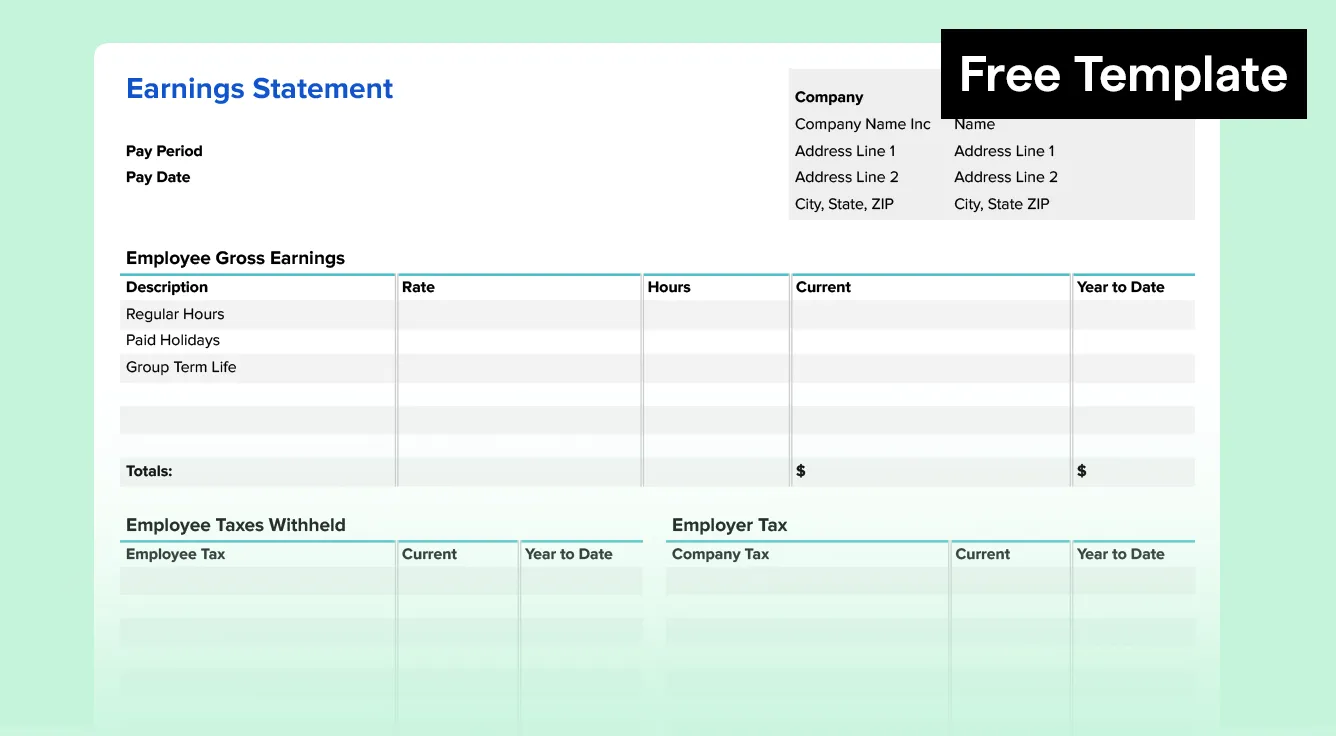Getting pay right is essential — but ensuring the proper pay for time worked can get complicated. When employees start mid-pay period, take unpaid leave, or depart before the cycle ends, HR professionals must prorate their salary to ensure pay correctly corresponds to the time worked.
Failing to accurately do so can mean compliance challenges, costly payroll errors, and employee disengagement. Below, we look more closely at when and how to prorate pay.
{{rich-takeaway}}
What is a prorated salary?
Exempt employees (typically full-time salaried employees) are usually eligible to receive their entire salary regardless of the days or hours worked in a given time period. But in some cases, it’s permissible for employers to adjust their pay for the days worked or prorate their salary.
A prorated salary, also known as pro rata salary, is a proportional payment that reflects the actual time an employee works during a specific pay period. Rather than paying the full salary amount, employers calculate what portion the employee has earned based on days or hours worked.
When do you need to prorate salary?
“Prorated salary is basically just portioning salary,” explained Angela Schmitt, founder and CEO of A.S.K. Talent Solutions. “It’s very common with merit increases for new hires. And so it's just portioning the increased amount to reflect the amount of time that somebody spent in the role.”
For example, when someone is hired mid-year and becomes eligible for a pay raise, they don't receive the full annual raise amount. Instead, the increase is prorated — meaning it's reduced proportionally to reflect how long they actually worked in that role during the review period.
There are several other scenarios that require salary proration. Some are more common than others, and each has its own considerations and level of complexity.
New Employee Mid-Cycle Starts
The most common proration scenario occurs when salaried employees begin working partway through a pay period. Whether someone starts on a Tuesday in a weekly pay cycle or joins mid-month, their first paycheck should reflect only the days they actually worked.
Employee Departures
When employees leave before completing a full pay period, proration ensures they’re paid for the time they worked. This applies to both voluntary resignations and involuntary terminations.
Unpaid Leave Scenarios
Prorating employee pay can also become necessary when salaried employees take unpaid time off. Whether it’s parental leave, Family and Medical Leave Act (FMLA) leave, personal leave, a leave of absence, or even a sabbatical, when paid leave benefits are exhausted, any additional time typically is unpaid and requires proration.
Mid-Cycle Salary Changes
Promotions, demotions, or other salary adjustments that take effect during a pay period may require proration calculations. However, both of the experts we spoke to for this article noted that many companies avoid this by timing employee salary changes to coincide with pay period start dates.
Intermittent Leave Complications
Yekaterina Weaklim, interim HR consultant at Korn Ferry, highlighted a particularly complex scenario. “Intermittent [leave] is where it gets interesting.” For example, take an employee who returns from disability leave but is medically cleared to work only part-time (like 20 hours instead of 40 hours per week).
The challenge here is that their employment status is likely to change, so HR must consider how best to handle this from both an employee and administrative perspective.
In these cases, Weaklim suggests, “The easiest approach is to convert them to hourly. But you could also apply the same principle if you keep them on salary — which I don’t recommend — by doing the proration based on actual days worked and calculating that daily rate for them.” Either way, she explained, “The employment status will still be impacted.”
This, of course, complicates benefits, and the benefits plan provider would need to be pulled into the conversation as plan rules differ depending on the company. Next, HR should consult state rules regarding how employment status is handled.
“If there are no state rules, then the next piece is to consult FMLA (or FLSA) rules as well. The treatment of intermittent and return can be tricky, and the payroll perspective is only one aspect, but there are other variables that need to be considered,” Weaklim added.
{{rich-highlight-2}}
How to Calculate Prorated Salary
The method for calculating an employee’s prorated salary depends on your pay schedule and the metric by which you’re prorating.
“The more specific you can be to the employee, the better it’s typically received,” said Schmitt, noting that by day or hours worked is best. Although, she said, “To administer that level of detail, you really need payroll technology that supports proration.”
Prorating by workday or hourly rate is acceptable, but avoid prorating by calendar days. “AI will tell you to prorate by calendar days, but that’s wrong,” said Weaklim. “Your salary is based on days actually worked, which is why we calculated it based on 2,080 work hours, the standard for the US, worked per year,” she said. “You would never do it based on calendar days, only on workdays because otherwise you’d be disadvantaging that person.”
Step-by-Step Calculation Method
📌 For Full-Time, Salaried Employees, by Daily Rate
- Calculate monthly salary: Annual salary ÷ 12 = monthly salary
- Determine number of workdays in the period: Count only business days (Monday through Friday, excluding holidays) in the relevant month or pay period.
- Calculate daily rate: Monthly salary ÷ number of workdays in month = daily rate
- Apply proration: Daily rate × actual workdays = prorated salary
📣 Prorating should always be calculated based on workdays, not calendar days.
{{rich-highlight-3}}
Understanding Daily Rate Variations
📝 Keep in mind that while the daily rate varies each month based on working days, this difference evens out over the full year. February might have a higher daily rate ($500/day for 20 workdays) while July has a lower rate ($454.55/day for 22 workdays), but both months still equal the same $10,000 monthly salary.
This variation ensures that employees receive their full annual compensation regardless of which months have more or fewer working days.
📌 For Hourly Employees
Prorating pay isn’t usually necessary for hourly employees; you simply pay them for the number of hours worked, just like any other pay period.
Legal and Compliance Considerations
Like with all human resources matters, prorating salary comes with compliance considerations.
FLSA Compliance
The Fair Labor Standards Act (FLSA) governs how employers can make deductions from salaried employees’ pay with respect to proration. “With all the prorations around salaried employees, you have to be careful that you’re not making any impermissible deductions,” said Schmitt. For example, it would be impermissible to dock an exempt employee’s pay because of business operating challenges or for using their allotted sick leave or paid time off.
State Law Variations
Keep in mind that state wage laws, including those around proration, may have stricter requirements than the federal FLSA rules. And while federal law dictates what you could do, state law mandates what you must do. Stay abreast of state laws to ensure you’re in compliance with a potentially more restrictive regulation.
Employment Contract Considerations
Employee contract terms are a necessary consideration, too. With terms of employment and pay expressly stated in contracts, an employer may be liable for a breach of contract if they fail to pay the compensation or wages stated in the contract. Additionally, some contracts require a written agreement for salary changes, which would make any verbal proration agreements or conversations unenforceable.
Communication and Documentation Best Practices
When employees see a prorated paycheck, they’ll naturally want to understand the calculation behind it. “The best practice is to be very proactive and have a worksheet that explains the specific calculations,” said Schmitt.
Another good practice is to actually walk the employee through the calculation. “Let’s say you’re talking about merit increases. Show them: Here’s your performance, here’s what you were awarded, here’s the number of days you worked this year, and here’s the proration, and here’s the actual amount you get in your paycheck,” said Schmitt.
When you explain the math out proactively, it’s much more effective.
Especially with merit increases for employees who have not been with a company for a full year, explaining the math can help them understand why they aren’t seeing a full 4% raise, for example, in their paycheck.
“When you explain the math out proactively, it’s much more effective. You can avoid someone walking away thinking, ‘Wait, why did I get 1%? Are they not happy with what I did? How did they calculate this?’ — You’re always going to be on your heels trying to recover from that communication,” said Schmitt.
{{rich-highlight-1}}
How Payroll Technology Can Help
Prorating payroll can be error-prone, requires strict documentation, and only grows more complex when running payroll across state lines.
“If you're finding that you’re jumping through hoops to manipulate data, that’s a sign that you should have a system that’s going to do that for you,” said Schmitt.
Modern payroll systems can eliminate many of the complexities and error risks associated with manual proration calculations. Automated solutions ensure consistency, maintain detailed audit trails, and integrate seamlessly with time tracking and benefits administration.
When evaluating payroll software, look for solutions that:
- Automatically calculate prorations based on start/end dates.
- Support different proration methods and pay periods.
- Maintain compliance with state-specific requirements.
- Integrate with existing HRIS and time tracking systems.
Prorate pay with confidence.
Accurate salary proration requires attention to detail, clear policies, and consistent application. By focusing on workday-based calculations, maintaining transparent communication, and ensuring proper documentation, HR professionals can handle these complex scenarios confidently while maintaining compliance and employee trust.
Ready to connect payroll with performance? See how Lattice Compensation streamlines pay decisions, ensures compliance, and provides the documentation and transparency your team needs.
{{rich-highlight-4}}
💪 Compensation planning is hard. Make it easy with Lattice.
Our platform makes it simpler for employees, HR, and finance teams alike. Whoever said there's no such thing as "easy money" never used Lattice.
Example
An employee with an annual salary of $120,000 began work on March 13, 2025.
- Yearly salary: $120,000
- Monthly salary: $120,000 ÷ 12 = $10,000
- Total workdays in March = 21
- Daily rate: $10,000 ÷ 21 = $476.19
- March 13-31 workdays: 13
- Prorated salary: $476.19 × 13 = $6,190.47
🚩 Disclaimer: This article is for informational purposes only and does not constitute legal, tax, or compliance advice. Businesses should consult a qualified tax professional or legal advisor to ensure compliance with applicable laws and regulations.
Key Points:
- Prorating salary ensures employees are paid accurately for partial pay periods.
- Calculate prorated pay based on actual workdays (not calendar days).
- Maintain consistent, well-documented processes and communicate proactively.
- Payroll technology automates proration to ensure accurate, compliant pay.





.webp)



